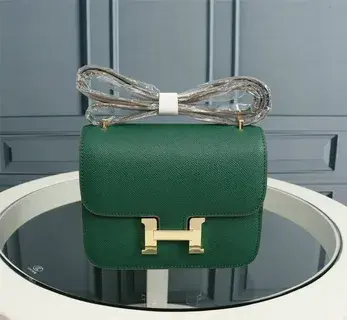Why Heat-Reflective Waterproofing is Ideal for Dubai
- Maintenance indubai
- Jan 30
- 4 min read

The scorching temperatures and sunbeams beating during the day, while heavy, rare rain in Dubai makes water-proofing imperative to buildings with added factors of decreasing absorption of heat by buildings. Reflective waterproofing is the advanced solution, which fulfills both aspects of the requirements of the kind of climate that prevails in the city. In this article, the advantages of heat-reflective waterproofing and why it is the best choice for the structures in Dubai are discussed.
Understanding Heat-Reflective Waterproofing
Heat-reflective roof waterproofing in dubai provides advanced coating or membrane application over rooftops, walls, and other outer parts of buildings to shield them from water and solar thermal activities. This system contains water-resistant property through reflective capability to minimize absorption of heat. The coatings or the membranes designed with these properties usually include elastomeric coatings or specialized membranes mainly infused with elements like titanium dioxide or ceramic microspheres. These combine to reflect or repel both water and excessive heat.
The Climate Challenge in Dubai
Dubai has extreme weather, and summer temperatures are often recorded to be over 45°C (113°F). The heat index, when combined with direct solar radiation, tends to push indoor temperatures higher, making the cooling systems work more. Not being in a desert region, heavy rainfall also hits Dubai from time to time, especially during winter. Therefore, sudden rain showers combined with extremely hot temperatures is something the traditional waterproofing methods can't bear. Heat-reflective waterproofing tackles both these problems simultaneously.
Energy Efficiency and Cost Savings
One of the major advantages of heat-reflective waterproofing is its low energy usage. Since most of the solar radiation is reflected by these coatings, the buildings stay cooler, thus using much less air conditioning. This consequently means lower electricity bills and waterproofing in dubai carbon footprint. Considering that the Dubai Government is serious with regard to sustainable development and energy efficiency, embracing this heat-reflective waterproofing concurs with Dubai's green building initiatives.
Increased Building Life
High temperatures and UV rays have an adverse effect on the ordinary waterproofing materials, which eventually crack, deteriorate, and leak with time. Heat-reflective waterproofing materials are developed to have UV resistance for an extended period of time. This does not permit the expansion and contraction in structures due to heat, usually accountable for destruction. Coatings ensure that the surface temperature is kept constant and hence prolongs the life span of buildings with lesser frequent repair and maintenance.
Enhanced Indoor Comfort
Buildings in Dubai, particularly those that have flat rooftops, absorb and retain heat during the day thus leading to an indoor temperature which may increase highly. Waterproofing heat reflective prevents this as it reflects the sun's energy instead of absorbing it, thus making sure that a living or working space remains cool and the pressure on the air conditioners is not very high. This subsequently increases the comfort overall, thus wellbeing.
Although the climate in Dubai is arid, occasional and heavy rainfall can cause seepage if buildings are not properly protected. Heat-reflective waterproofing provides a complete, watertight coating with no leakage or mold growth. In contrast, conventional waterproofing products may deteriorate at higher temperatures, while these new technologies remain intact.
Environmental Benefits
This waterproofing contributes to environmental sustainability as it reduces the urban heat island effect. City structures absorb and hold heat, hence causing a form of an urban heat island effect that increases temperatures in general across the city. Such coatings would reflect the heat instead of retaining it, making the ambient temperature decrease; consequently, the livability of the cities increases. Additionally, these coatings are predominantly made from nontoxic environmentally friendly material; therefore, it does not produce hazardous chemicals within the atmosphere.
Application and Maintenance
The application process of heat-reflective waterproofing is relatively simple. It can be applied in any new construction, as well as on existing buildings. The process includes cleaning and preparation of the surface, application of primer if required, and coating of the heat-reflective waterproofing material. Some of the most advanced coatings also have self-cleaning properties, reducing dirt accumulation and any associated maintenance efforts. They last for many years and continue providing protection that saves money for years if installed with proper care and periodically inspected.
Versatility in Adaptability: Suitable to Various Structures
Heat-reflective waterproofing is adaptable to different structures; it could be residential buildings, commercial establishments, industrial facilities, and even works of infrastructure. It is particularly well-suited for high-rise buildings in the city of Dubai because this amount of heat absorption can lead to increase cost in cooling charges and a feeling of discomfort. It is also most ideal for villas where owners would want alternatives to maintain indoor temperature with reduced electricity consumption.
Government Regulations and Incentives
Dubai has been aggressively encouraging green building regulations to encourage the sustainable construction of buildings. Dubai Municipality's Green Building Regulations and the Estidama Pearl Rating System by the UAE recommend the use of energy-efficient materials and technologies. Heat-reflective waterproofing can assist in the builder in meeting the green building regulations, and this could also attract some incentives in energy conservation.
Conclusion
Dubai's aggressive climate demands modern building solutions that will tackle both heat and water issues. Heat reflective waterproofing will be the answer, providing not only energy efficiency but also increasing durability, more comfort indoors, and environmental aspects. Investment in this advanced technology will ensure long-term saving of property, reduced maintenance cost, and, most importantly, a sustainable future for the city. As Dubai continues to grow and develop, adopting heat-reflective waterproofing will be at the center of building a resilient, energy-efficient urban landscape.



Comments